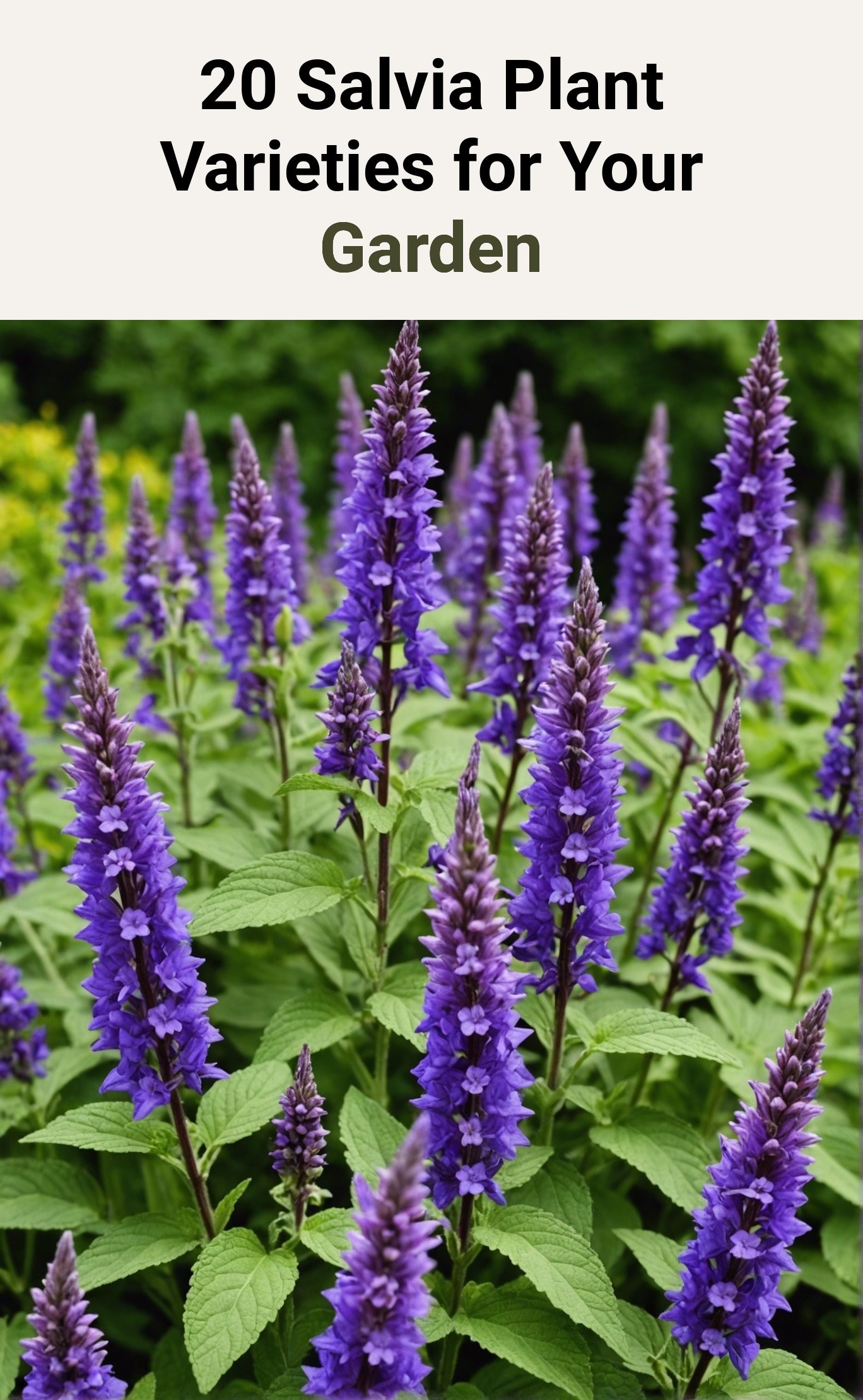Beautiful Plants For Your Interior
Beautiful Plants For Your Interior
As a seasoned gardener, I’ve discovered the captivating world of Salvia plants! With 20 remarkable varieties, each holding its own unique character and charm, you’re sure to find a Salvia to complement your garden.
From the culinary delights of Common Sage to the vibrant hues of Autumn Sage, this diverse genus offers a symphony of colors, textures, and aromas that will elevate your outdoor space.
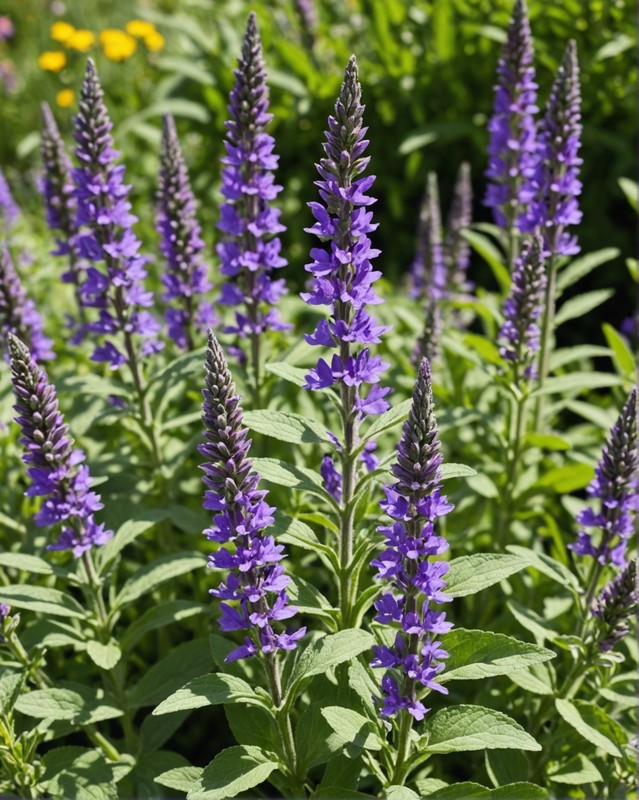
Common sage, also known as Salvia officinalis, is a versatile herb that brings both flavor and medicinal benefits to your garden. Its aromatic leaves add depth to culinary dishes, while its flowers attract bees and other pollinators.
As a medicinal herb, common sage has been used for centuries to treat a variety of ailments, including sore throats, digestive issues, and stress.
Its calming properties can promote relaxation and restful sleep. Whether you’re looking to add flavor to your cooking or enhance your health, common sage is a valuable addition to any garden.
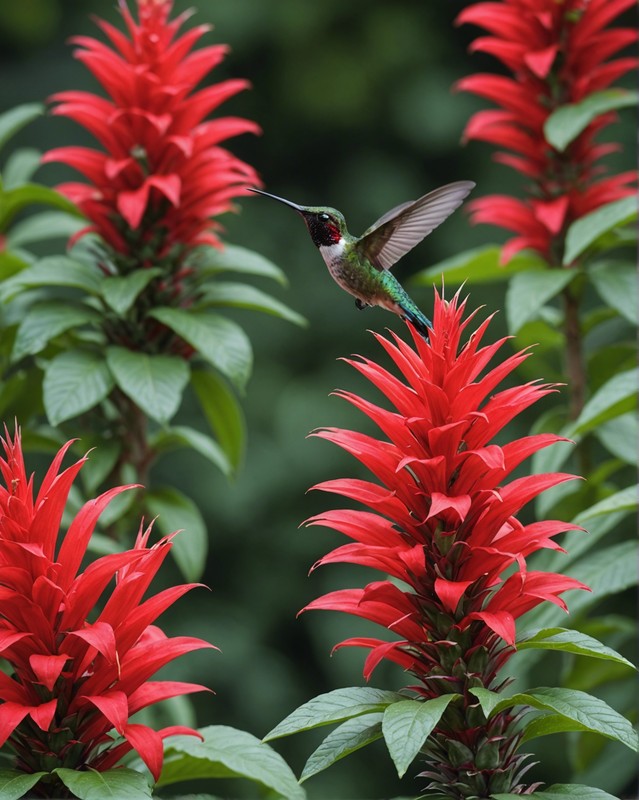
Pineapple Sage, also known as Salvia elegans, is a beautiful and fragrant herb that adds a touch of the tropics to the garden.
Its foliage emits a sweet, fruity aroma reminiscent of pineapples, making it a delight for both the eyes and nose.
In the summer, it produces showy scarlet flowers that attract hummingbirds and butterflies.
Pineapple Sage is easy to grow and prefers well-drained soil and plenty of sunlight.
It’s a low-maintenance herb that can reach heights of 3-4 feet.
Its leaves can be used fresh or dried in teas, salads, and desserts, imparting a unique pineapple-like flavor.
The flowers are edible too, and can be used as a garnish or in summery drinks.
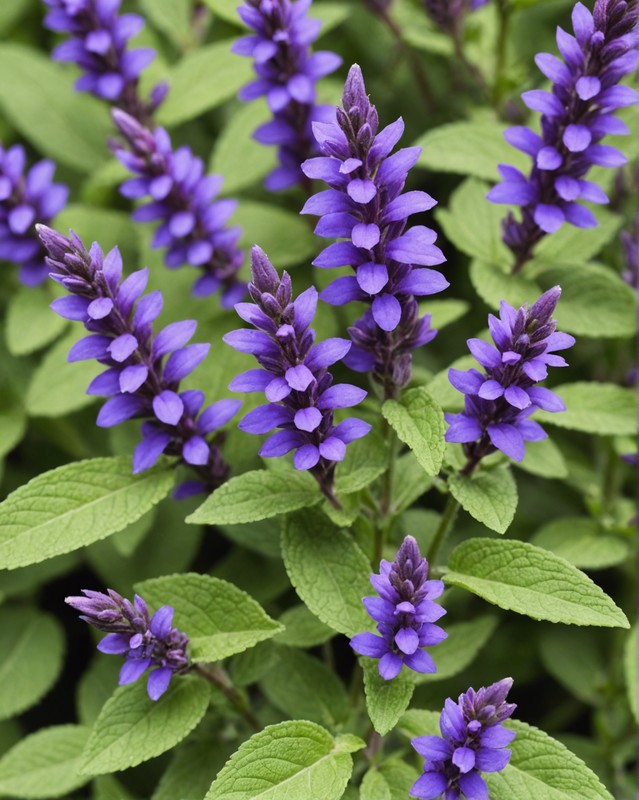
Salvia microphylla, also known as Miniature Sage, is an evergreen subshrub that’s native to Mexico. Despite its diminutive name, it can spread two to three feet in full sun to partial shade.
It’s a low-maintenance plant that’s easy to grow, and it features grayish-green foliage and tiny purple flowers that bloom in spring.
It’s a versatile plant that can be used as a groundcover, in rock gardens, or as a border plant.
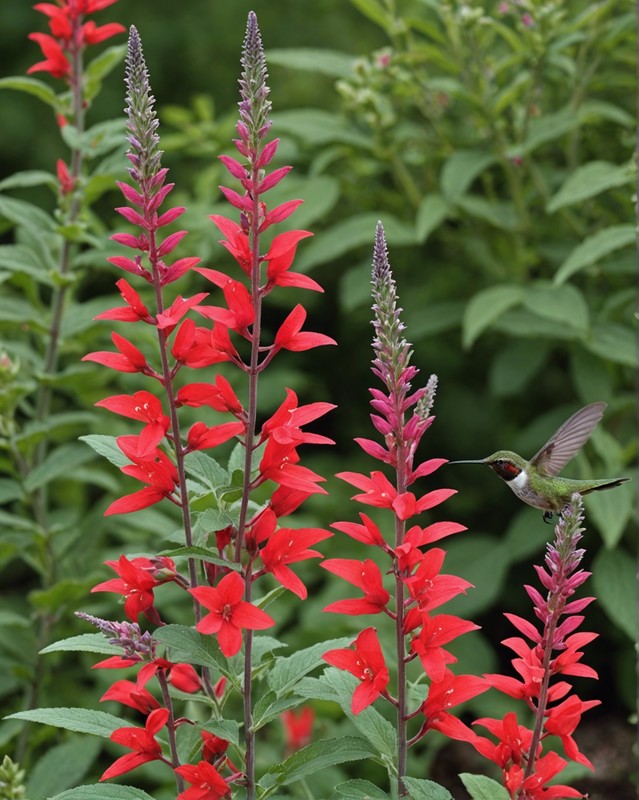
Autumn Sage (Salvia greggii) is a fantastic choice for gardeners seeking vibrant color in their gardens. This Mexican native thrives in full sun and well-drained soil, growing up to 2-3 feet tall.
Its foliage features aromatic, textured leaves that come in shades of green, gray, or silver.
The star of the show is its scarlet-red blooms that emerge in late summer, attracting hummingbirds and butterflies. This drought-tolerant plant is a low-maintenance beauty that adds a touch of the Southwest to any garden.
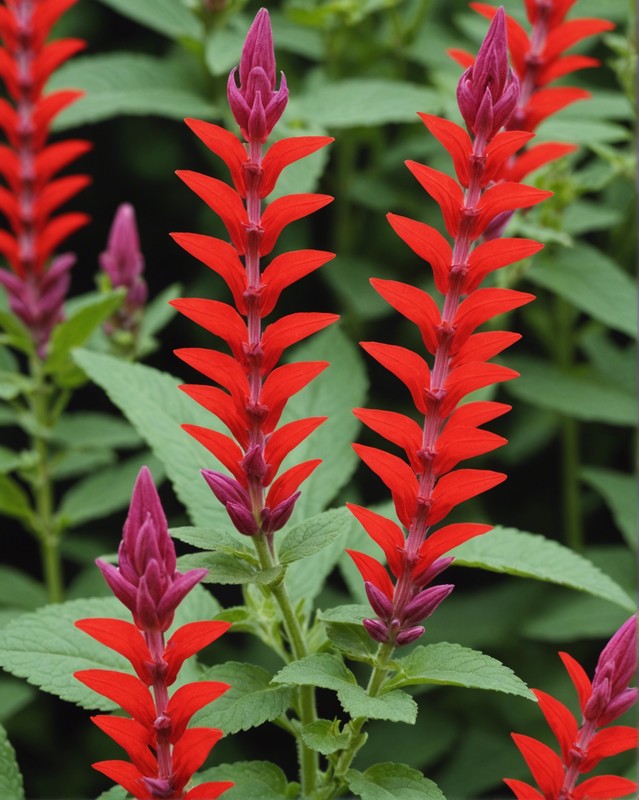
Scarlet Sage, also known as Salvia splendens, is a beautiful, eye-catching annual that produces vibrant, trumpet-shaped blooms.
Its showy, velvety flowers come in shades of red, pink, white, and even purple, attracting hummingbirds and other pollinators to your garden.
Scarlet Sage thrives in full sun to partial shade and requires well-drained soil.
It’s relatively low-maintenance, making it a great choice for both beginners and experienced gardeners.
The blooms appear profusely throughout the summer and fall, adding a splash of color to borders, containers, and cutting gardens.
Whether you’re looking to attract wildlife or simply add a touch of vibrant beauty to your outdoor space, Scarlet Sage is an excellent choice.
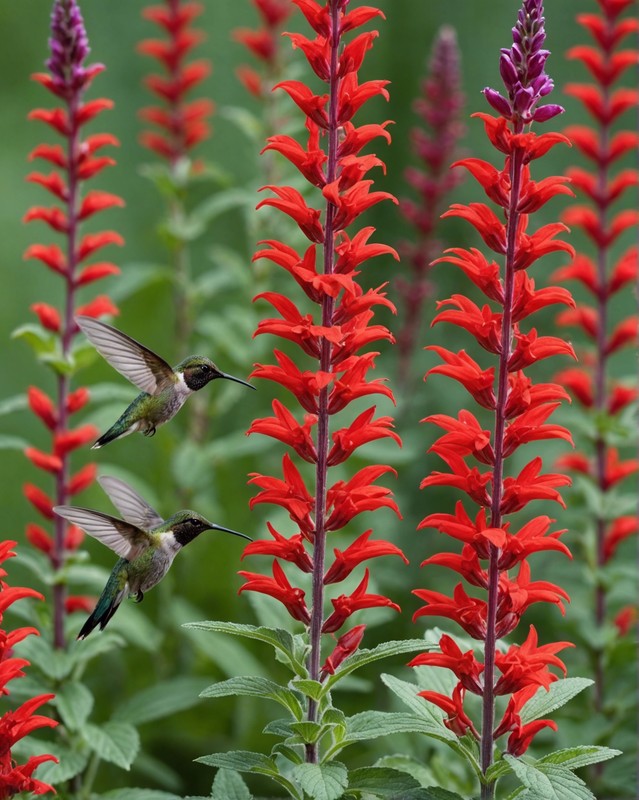
With its vibrant scarlet-red flowers that resemble a hummingbird’s beak, Salvia coccinea, aptly named Blood Sage, is a captivating addition to any garden.
This herbaceous perennial is native to Mexico and Central America, thriving in warm and humid climates.
Blood Sage is not only a visual stunner but also attracts a variety of pollinators, including hummingbirds, bees, and butterflies.
Its blooming period extends from early summer to frost, providing continuous color and food sources throughout the growing season.
Reaching a height of 2-3 feet, it forms an upright, bushy habit that adds visual interest to borders, containers, or cottage gardens.
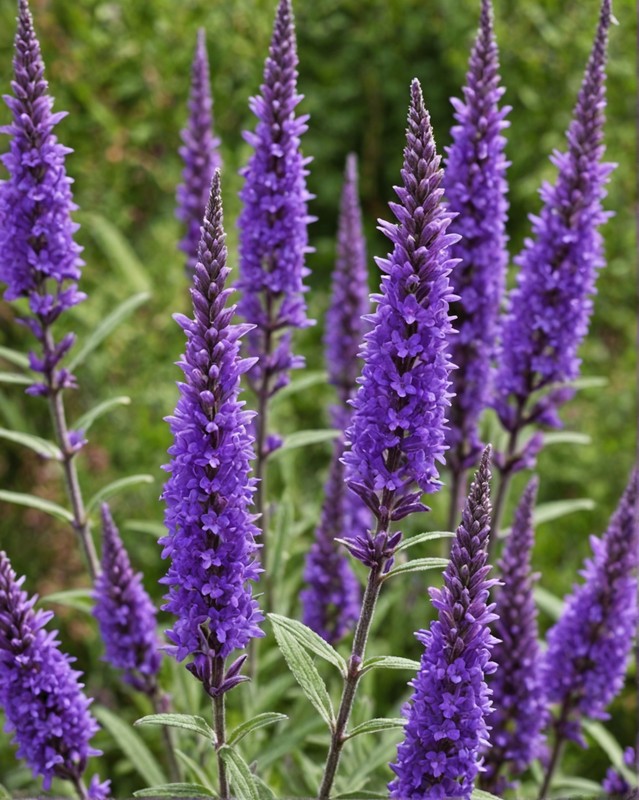
Mexican Bush Sage, or Salvia leucantha, is a stunning addition to any garden with its velvety, purple flower spikes that bloom late summer to fall. This drought-tolerant plant thrives in full sun to partial shade and prefers well-drained soil.
Its aromatic foliage and flowers attract hummingbirds, butterflies, and other pollinators, making it a valuable plant for wildlife gardens.
Standing 2-4 feet tall, Mexican Bush Sage blooms profusely and creates a dramatic focal point in the landscape.
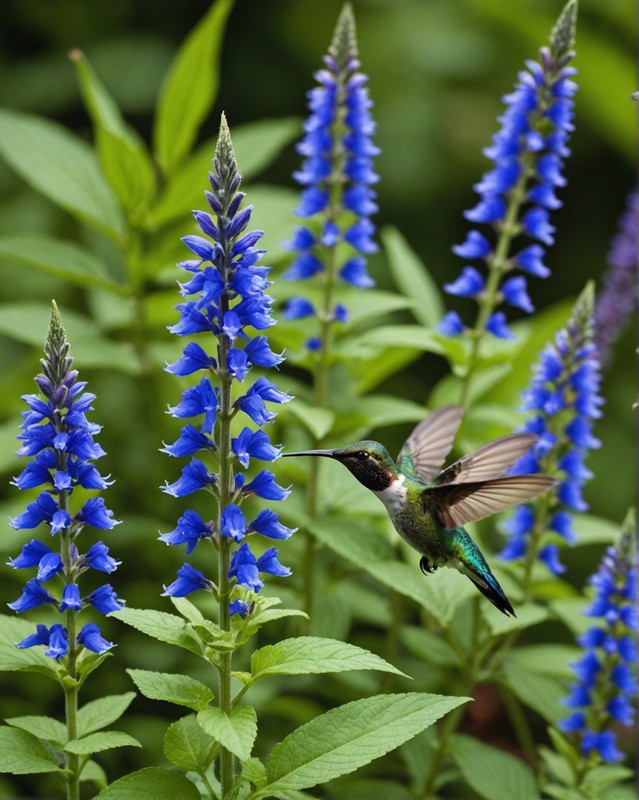
This stunning sage is a hummingbird magnet, attracting them with its vibrant blue flowers that bloom from summer to fall. Its anise-scented foliage releases a delightful aroma when crushed, adding a touch of fragrance to your garden.
Anise-scented sage grows up to 3 feet tall and prefers full sun to partial shade.
It’s a hardy plant that can tolerate a variety of soil conditions, making it an easy addition to any garden.
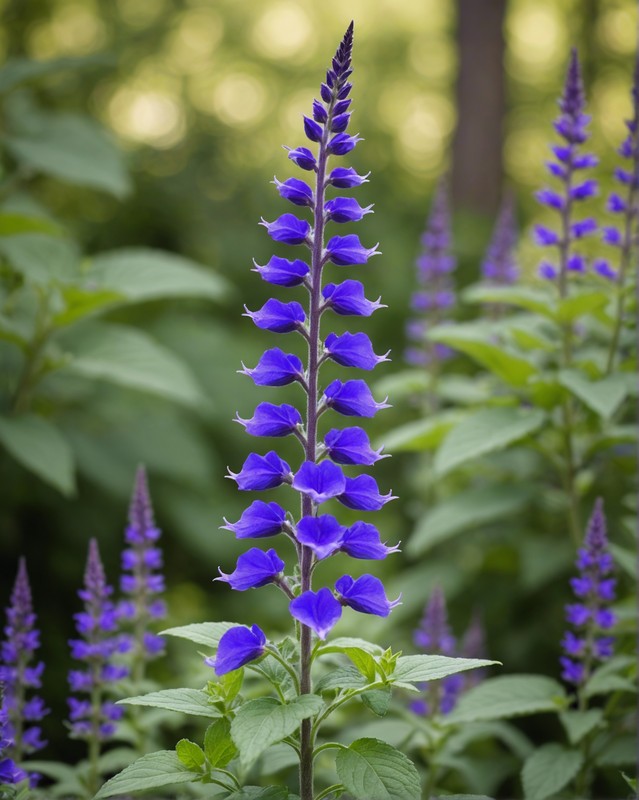
Doris’ Sage, a striking evergreen perennial, boasts an upright habit with silver-green leaves. Its eye-catching foliage makes it a fantastic addition to borders, containers, and gravel gardens.
Come summer, Doris’ Sage produces vivid violet-blue flower spikes that rise above the foliage, attracting pollinators to your outdoor space.
Native to Mexico, it’s a hardy plant that prefers well-drained soil in full sun or partial shade.
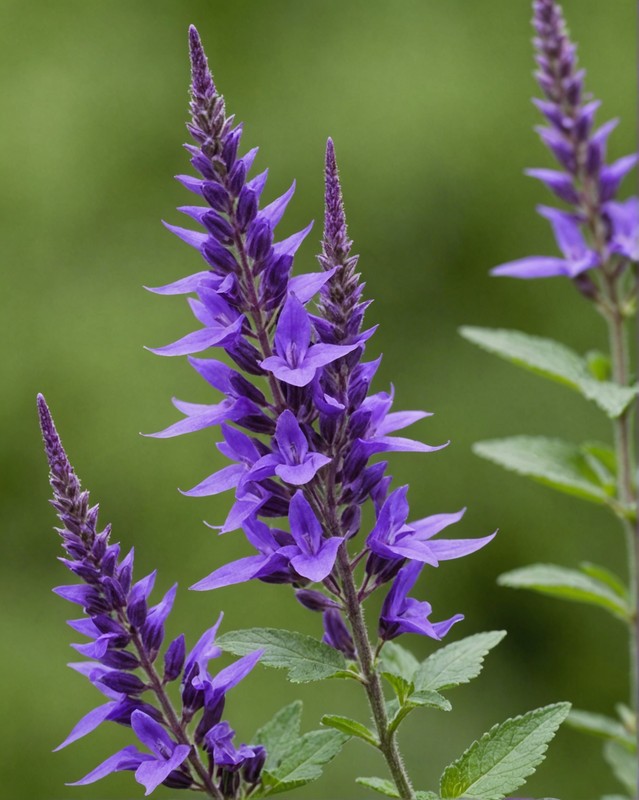
Woodland Sage, also known as Salvia nemorosa, is a beautiful and easy-to-grow perennial that brings a touch of elegance to any garden.
Its delicate spikes of purple flowers bloom profusely from late spring to early summer, attracting pollinators and adding a vibrant splash of color to your landscape.
This compact plant forms a dense, bushy habit and grows well in both full sun and partial shade.
Woodland Sage is also a great choice for containers and mixed borders.
Its adaptability and beauty make it a versatile and charming addition to any garden.
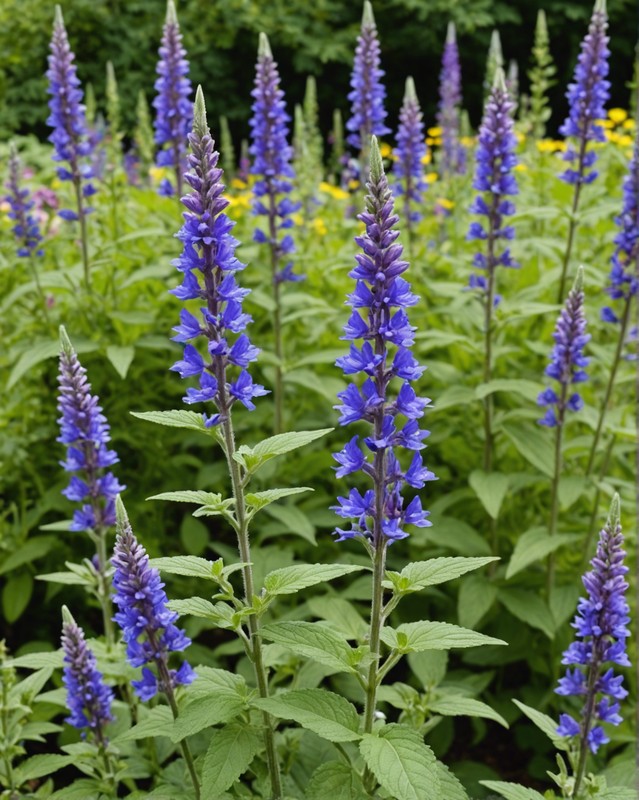
With its graceful spires of blue-purple flowers, Salvia pratensis, also known as Meadow Sage, adds a touch of elegance to any garden.
This perennial, hardy in zones 3-8, thrives in well-drained soil and full sun to partial shade.
Reaching heights of up to 2 feet, it blooms from midsummer to early fall, attracting pollinators like bees and butterflies.
Its fragrant foliage can also be used for teas or dried for potpourris.
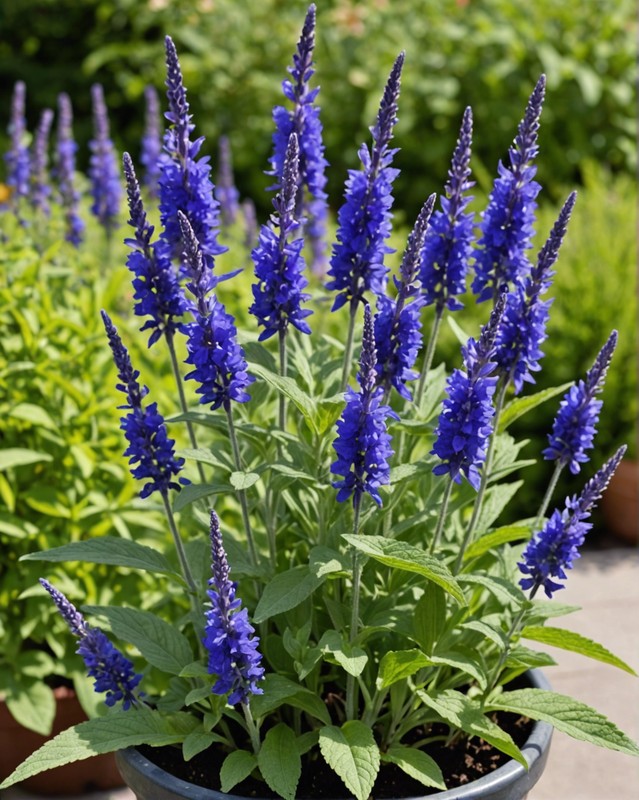
Salvia confertifolia, also known as Bush Clumping Sage, is a compact and tidy member of the Salvia family.
Its dense, low-growing form creates an attractive groundcover that can spread up to 2 feet wide.
The foliage of this sage is a beautiful shade of gray-green, with slightly crinkled leaves.
In the summer, Salvia confertifolia produces spikes of deep blue flowers that are a magnet for pollinators.
This drought-tolerant plant is easy to grow and can thrive in full sun or partial shade.
Its compact size and tidy habit make it an excellent choice for containers or small gardens.
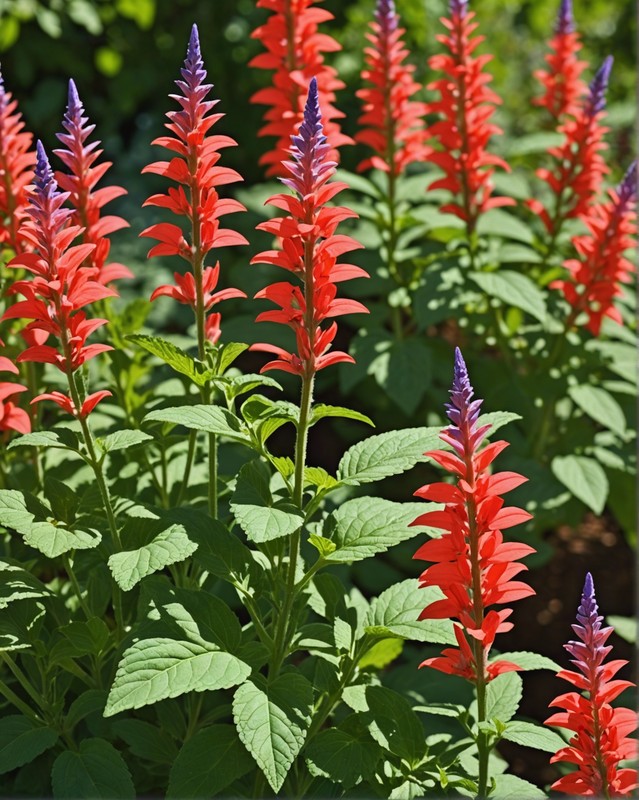
James’ Sage, a native of Mexico, is a vibrant and captivating addition to any garden.
Its showy, coral-colored flowers bloom profusely in late spring to early summer, creating a stunning display that attracts pollinators.
The heart-shaped leaves offer a lush backdrop for the eye-catching blooms, adding to its ornamental appeal.
Reaching heights of up to 2 feet, James’ Sage prefers well-drained soil and full sun to partial shade.
Its drought tolerance makes it an excellent choice for low-water gardening.
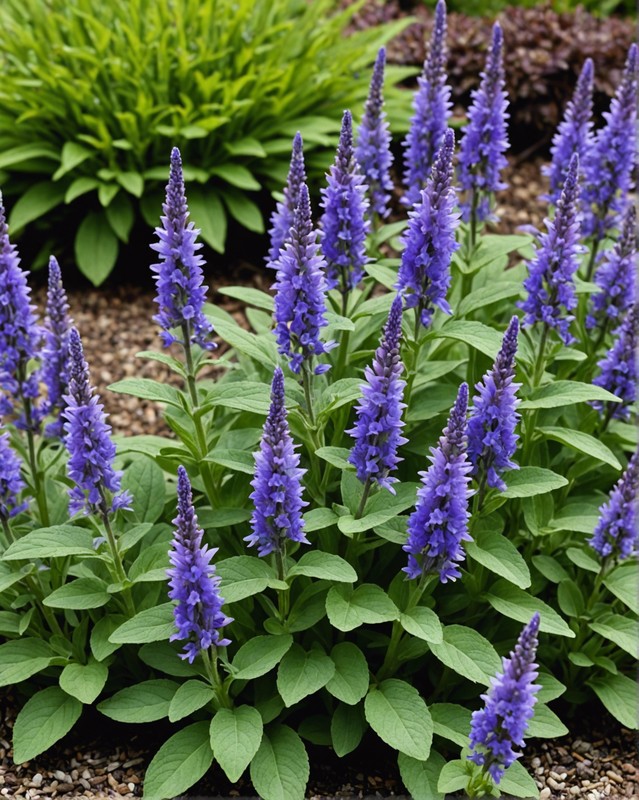
Salvia reptans, also known as Creeping Sage, is a low-growing groundcover that’s perfect for adding color and texture to your garden. Its trailing stems and glossy, green leaves create a dense mat that’s topped with spikes of lavender-blue flowers from midsummer to early fall.
As a hardy perennial, it’s easy to care for and will quickly spread to fill in empty spaces.
Creeping Sage thrives in full sun to partial shade and well-drained soil, making it a versatile choice for a variety of garden settings.
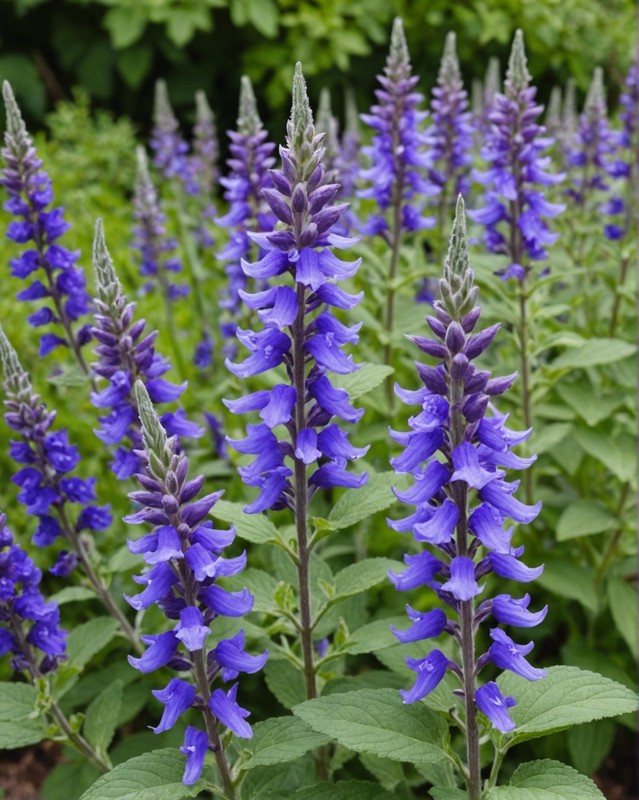
This perennial beauty boasts clusters of violet-blue blooms from summer to fall. Reaching heights of up to 2 feet, it’s a perfect complement to cottage gardens or as a border along pathways.
Salvia verticillata thrives in full sun to partial shade and tolerates hot, humid summers and drought-like conditions.
Its unique whorled formation of leaves and flowers adds a touch of distinction to any garden.
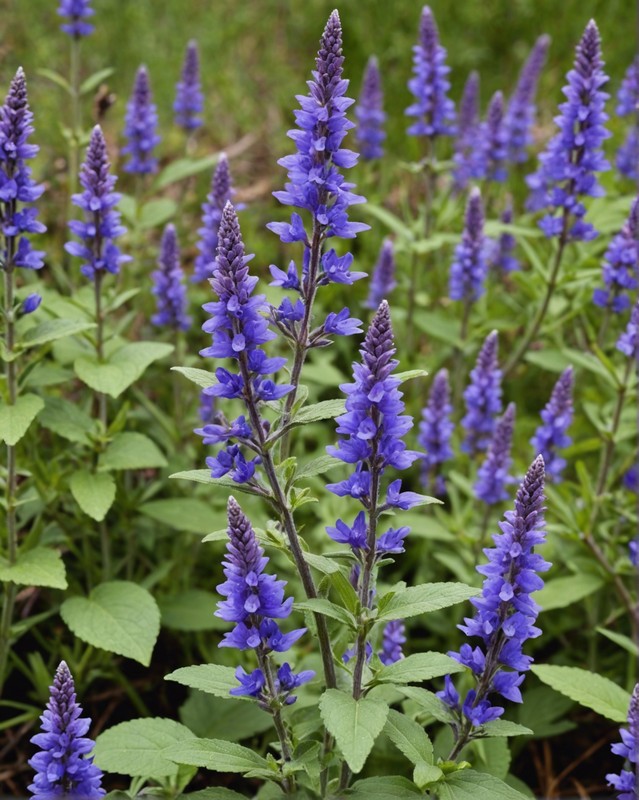
If you’re looking for a unique addition to your garden, consider the Salvia uliginosa, also known as Bog Sage.
This beautiful and easy-to-grow plant prefers moist soils, making it perfect for boggy areas or near water features.
Its stunning blue-purple flowers bloom from summer to fall, attracting pollinators and adding a touch of color to your landscape.
Bog Sage is a great choice for attracting wildlife and adding visual interest to your garden.
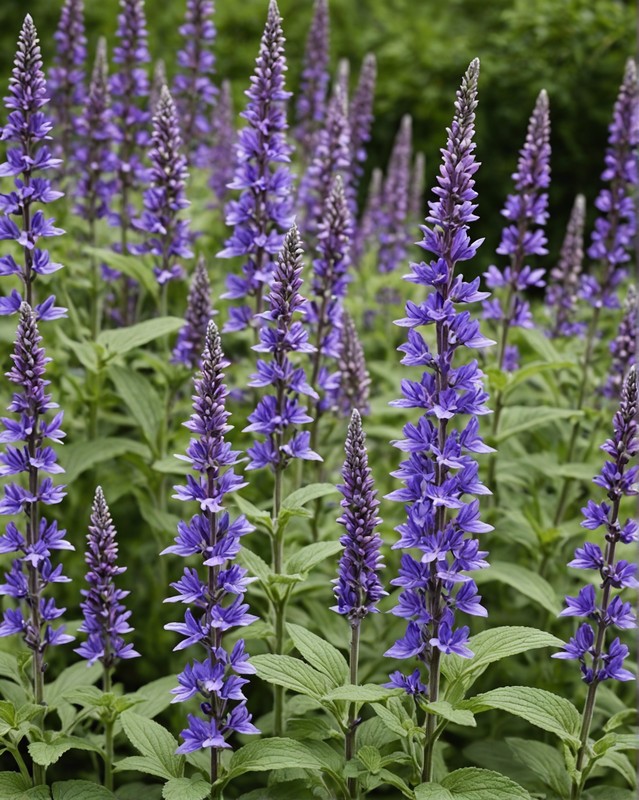
With its alluring musky scent and distinctive foliage, Salvia sclarea, commonly known as Clary Sage, stands out as a striking addition to any garden. Its broad, velvety leaves are a symphony of greens, gray, and white hues that create a breathtaking tapestry.
Reaching heights of up to four feet, Clary Sage boasts a long flowering season, gracing gardens with its vibrant blue or purple blooms from midsummer to early fall.
The flowers, arranged in attractive whorls along the stems, attract a multitude of pollinators, adding life and vitality to your outdoor space.
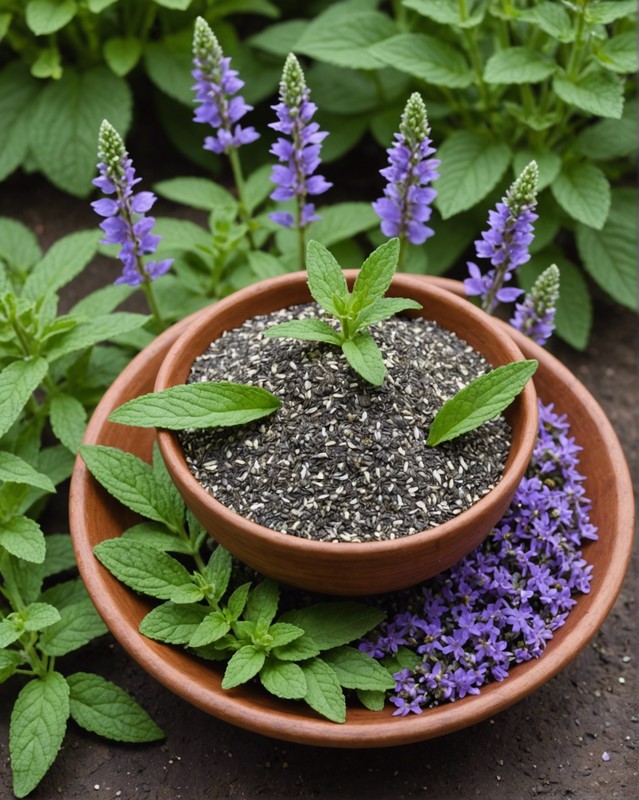
Chia Sage: A Nourishing Culinary Treat Prized for its versatile culinary uses, Chia Sage has earned its popularity as a superfood. Its edible seeds are an excellent source of fiber, omega-3 fatty acids, and antioxidants.
Sprinkle chia seeds on oatmeal, yogurt, or smoothies for a nutritional boost.
Chia seed gel, formed when the seeds are soaked in water, can be used as a thickener in sauces, baking recipes, or even as an egg substitute in vegan preparations. Grow this plant in your garden for a healthy and delicious addition to your diet.
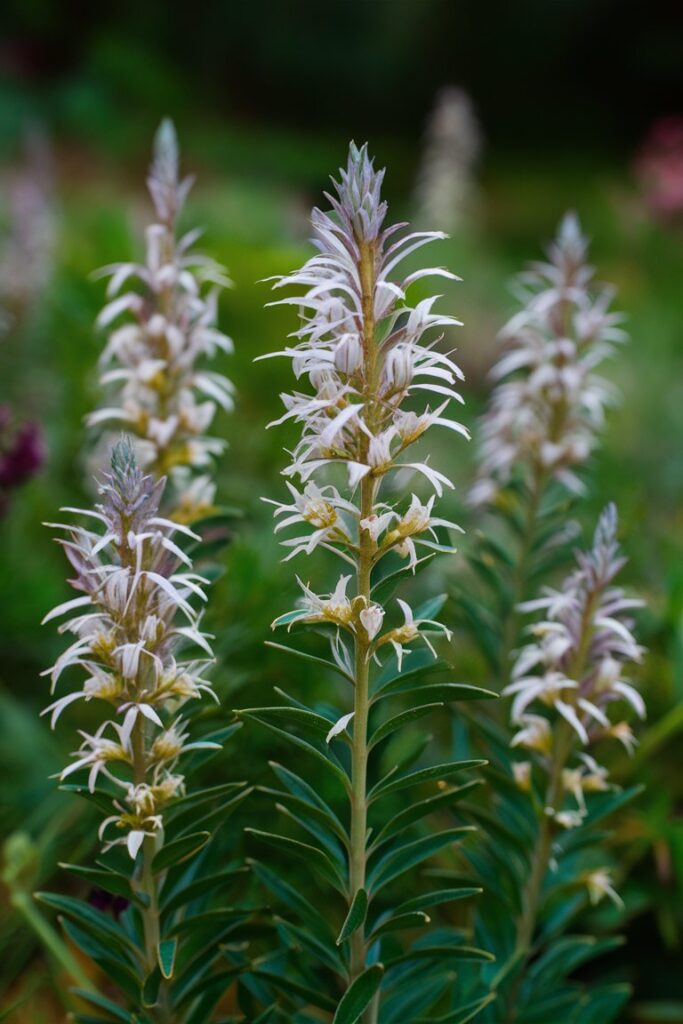
White Sage, or Salvia apiana, is a perennial shrub native to Western North America.
Known for its tall, stately stems and grayish-green leaves, White Sage has been prized for centuries by Native American tribes for its spiritual significance and medicinal properties.
The leaves and flowers exude a potent, aromatic fragrance that is often used in smudging ceremonies and incense.
In gardens, White Sage is a low-maintenance plant that prefers well-drained soil and full sun to partial shade.
Its drought tolerance and adaptability make it an ideal addition to xeriscapes and native plant gardens.
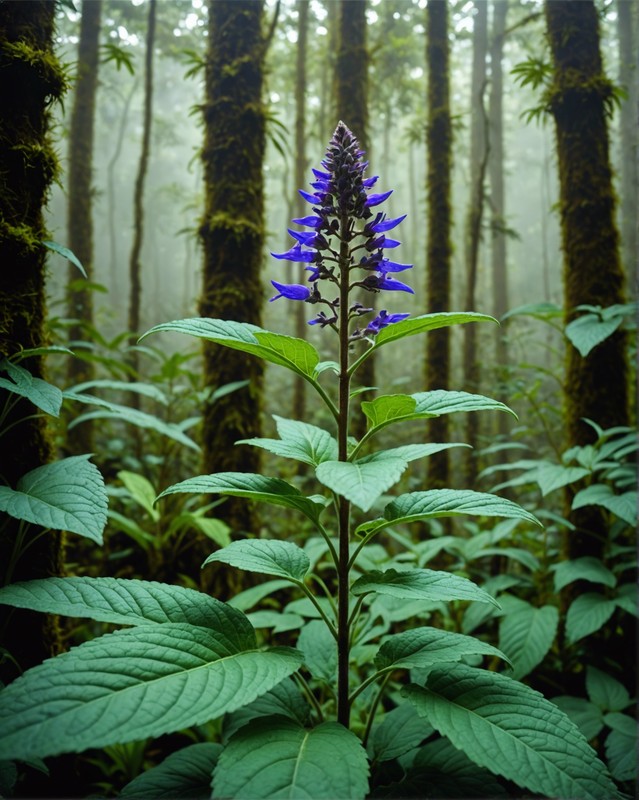
The renowned Salvia divinorum, often referred to as Diviner’s Sage, holds a revered position in the realm of Salvia.
Indigenous to the cloud forests of Mexico, this enthralling sage has been employed by Mazatec shamans for centuries to attain spiritual enlightenment and therapeutic benefits.
Its potent psychoactive properties stem from the presence of salvinorin A, a unique compound that induces vivid hallucinations and profound introspection.
While its cultivation can be challenging, Salvia divinorum’s profound effects on the mind and spirit have continued to captivate the imagination of seekers and researchers alike.
